Did you know that Moldova, a landlocked country in Eastern Europe, is home to a remarkable array of sacred natural sites and rich biodiversity? Despite its relatively small size, Moldova’s topography of hilly plains and forests provide habitats for a diverse range of plant and animal species, making it a unique destination for nature enthusiasts.
The preservation of these sacred sites and the conservation of biodiversity are crucial for maintaining the country’s cultural heritage and ecological balance. Moldova has implemented various strategies and plans to protect its natural sites and promote biodiversity management, ensuring that future generations can enjoy the beauty and significance of these sacred places.
Key Takeaways:
- Moldova is home to a diverse range of sacred natural sites and rich biodiversity.
- The country’s topography includes hilly plains and forests, which provide habitats for a wide array of plant and animal species.
- Moldova has made efforts to protect its natural sites and conserve biodiversity through the implementation of various strategies and plans.
- The preservation of sacred sites and the conservation of biodiversity are vital for maintaining cultural heritage and ecological balance.
- By safeguarding these sacred places, Moldova ensures a sustainable future for its natural treasures and cultural heritage.
Biodiversity in Moldova
Moldova boasts a rich biota, despite its relatively small size and absence of mountains. The country is home to approximately 1,842 species of vascular plants, as well as thousands of lower plants and fungi. The diverse habitats, including forests and river corridors, support a variety of wildlife, with over 170 vertebrate species recorded in forests and their associated meadows.
Moldova has taken steps to protect its biodiversity, with 5.61% of the country’s territory now designated as protected areas. These protected areas serve as important habitats for numerous species, contributing to the conservation of Moldova’s unique ecosystem. The Red Book of Moldova lists 242 rare plant and animal species that are protected by the state, highlighting the commitment to preserving endangered species and their habitats.
Moldova’s Species Diversity
The species diversity in Moldova is remarkable, considering its geographical limitations. The country’s rich biodiversity features a wide range of flora and fauna. Forests in Moldova support diverse ecosystems, providing habitats for various species, including birds, mammals, reptiles, and amphibians. The river corridors are also vital for the survival of many plant and animal species.
“Moldova’s biodiversity is a testament to the country’s commitment to environmental conservation and protection. By designating protected areas and safeguarding endangered species, Moldova is ensuring the preservation of its natural heritage for future generations.”
Moldova’s Protected Areas
Moldova has made significant efforts to establish protected areas for the conservation of its biodiversity. These areas serve as safe havens for wildlife and contribute to maintaining ecological balance. Currently, 5.61% of Moldova’s territory is designated as protected areas, including nature reserves, national parks, and protected landscapes. These areas help maintain the country’s ecological integrity and provide opportunities for scientific research and nature-based recreation.
| Protected Areas in Moldova |
Size |
Key Features |
| Lower Prut and Middle Prut River Meadows |
23,000 hectares |
Floodplain meadows, wetlands, and diverse bird species |
| Plaiul Fagului Nature Reserve |
4,011 hectares |
Old-growth forests, unique plant species, and a rich insect fauna |
| Orheiul Vechi State Archaeological and Cultural Reserve |
1,820 hectares |
Rocky landscape, ancient monastery complex, and archaeological sites |
Moldova’s Endangered Species
The Red Book of Moldova serves as an essential tool for protecting endangered species. It lists 242 rare plant and animal species that are under threat in Moldova. These species require special attention and conservation efforts to ensure their survival. The Red Book provides a framework for monitoring and implementing targeted measures to safeguard these species and their habitats.
Threats to Biodiversity
Moldova faces various challenges in preserving its biodiversity, as it contends with a range of threats that put its unique ecosystems at risk. These threats include habitat destruction, pollution, overexploitation of resources, and climate change.
The agricultural activities that dominate significant portions of the country have a direct impact on both forest and steppe zone biodiversity. The conversion of land for agriculture leads to habitat loss, pushing plant and animal species to the brink of extinction. The destruction of natural habitats disrupts the delicate balance of ecosystems, disrupting the interconnected web of life.
Another significant threat to biodiversity in Moldova is pollution. As industries and human settlements expand, the release of pollutants into the environment increases. Pollution affects water bodies, air quality, and soil health, all of which have adverse effects on the survival and well-being of organisms inhabiting these ecosystems.
Overexploitation of resources is yet another challenge faced by Moldova’s biodiversity. Unsustainable extraction of natural resources, such as timber, minerals, and wildlife, leads to the depletion of these vital components of ecosystems. The overexploitation of resources disrupts the natural balance and threatens the survival of both plant and animal species.
Climate change poses a growing risk to Moldova’s vulnerable biodiversity. Rising temperatures, changing precipitation patterns, and extreme weather events impact ecosystems and species distributions. Forests and rocky ecosystems, in particular, face the risk of losing plant species adapted to specific environmental conditions.
Human activities, including the infringement of environmental regulations and inadequate conservation measures, exacerbate the threats to Moldova’s biodiversity. The failure to adhere to sustainable practices and implement effective conservation measures further contributes to the degradation of ecosystems and the loss of biodiversity.
Tackling these threats requires a comprehensive approach to conservation. It involves the effective implementation of conservation measures, such as the establishment and management of protected areas, reforestation initiatives, and sustainable land-use practices. Adopting sustainable practices, promoting environmental awareness, and engaging local communities are crucial for the long-term preservation of Moldova’s biodiversity.
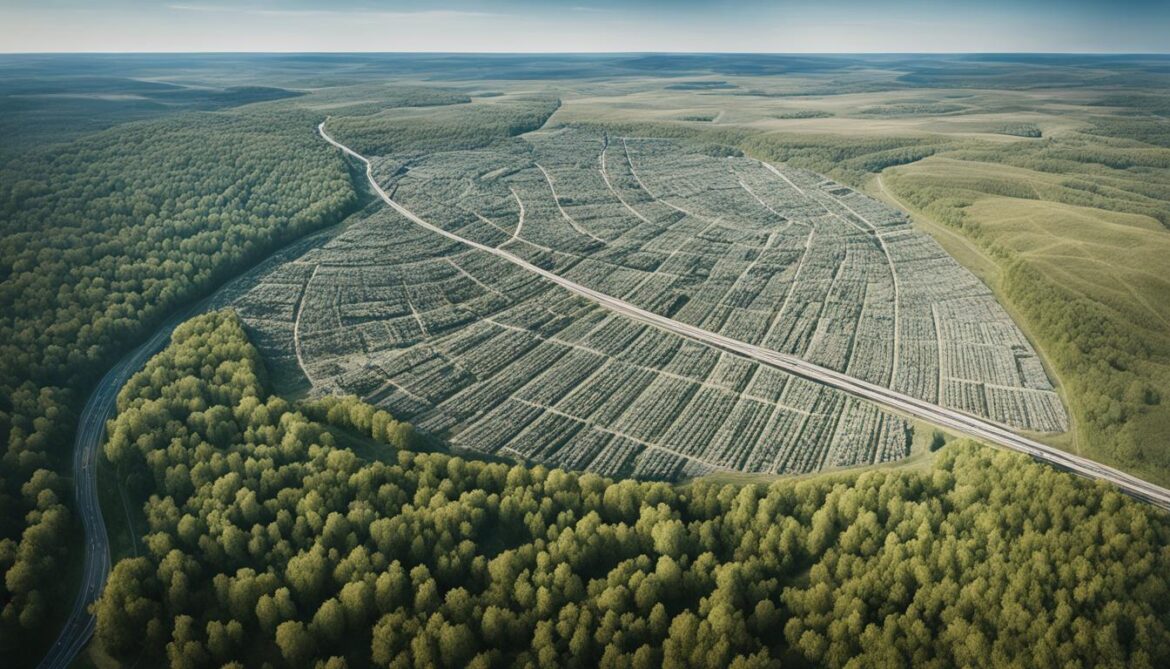
Moldova’s Threatened Species
Moldova is home to numerous species that are vulnerable to the threats mentioned above. Here are some examples of endangered species in Moldova:
| Endangered Species |
Threats |
| European Ground Squirrel |
Habitat destruction, climate change |
| Eastern Imperial Eagle |
Habitat loss, pollution |
| Moldavian Meadow Viper |
Habitat loss, overexploitation |
| European Herring Gull |
Pollution, climate change |
| Moldovan White Waterlily |
Habitat destruction, pollution |
Protecting these species and their habitats is essential for maintaining the ecological balance and preserving the biodiversity that makes Moldova unique.
Conservation Efforts
Moldova is dedicated to the preservation of its biodiversity and has implemented the National Biodiversity Strategy to enhance conservation efforts. The strategy encompasses various action plans aimed at safeguarding the country’s natural heritage and promoting sustainable practices.
One of the key objectives of the strategy is the expansion of protected areas to cover 8.0% of Moldova’s territory by 2020. This expansion ensures the conservation of critical habitats and provides a safe haven for endangered species. By designating more protected areas, Moldova aims to safeguard its unique biodiversity for future generations.
In addition to expanding protected areas, the government of Moldova has focused on sustainable financing mechanisms for their maintenance and management. Adequate funding is crucial for effective conservation and ensures that protected areas receive the necessary resources for monitoring, enforcement, and restoration activities.
Moldova has also recognized the importance of research and capacity-building in biodiversity conservation. Increased investment in these areas allows for a better understanding of ecological processes and the development of informed conservation strategies. It also enables the training and education of professionals in the field, promoting expertise and knowledge exchange.
Collaboration with international partners is another significant aspect of Moldova’s conservation efforts. Cooperation agreements with countries such as Romania, Belarus, and Ukraine have fostered joint initiatives and knowledge sharing, strengthening regional conservation networks.
Protected Areas Expansion in Moldova
The expansion of protected areas in Moldova is a vital step towards preserving the country’s invaluable natural treasures. This table showcases the growth of protected areas over the years:
| Year |
Protected Area Coverage (% of Territory) |
| 2010 |
4.5% |
| 2015 |
6.2% |
| 2020 |
8.0% |
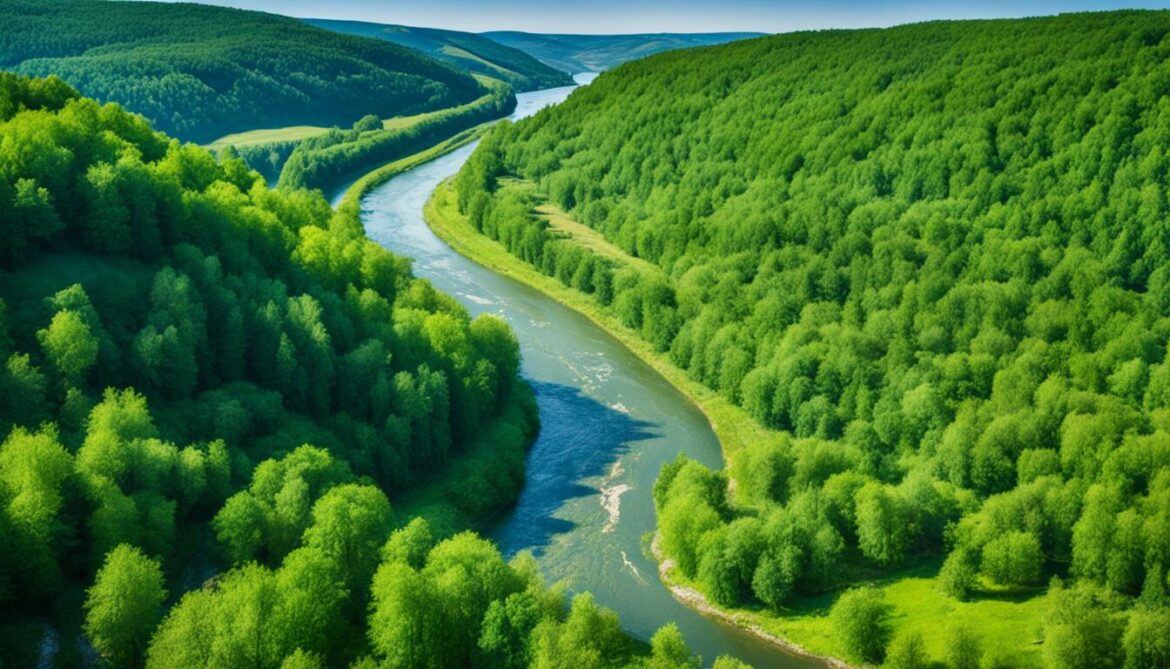
Moldova’s commitment to expanding protected areas demonstrates its dedication to biodiversity conservation and sustainable development. The ongoing efforts ensure the preservation of unique ecosystems, promote ecological balance, and safeguard the country’s natural heritage for future generations.
Cultural Landscapes of Moldova
Moldova is not only known for its natural sites, but also for its rich cultural landscapes. The region of Bucovina is home to the famous Painted Monasteries, a collection of medieval monasteries that are listed as a UNESCO World Heritage Site. These monasteries are renowned for their exquisite exterior frescoes, which depict scenes from the Bible and offer a glimpse into Moldova’s religious and artistic heritage. The vibrant colors and intricate details of the paintings captivate visitors, making the Painted Monasteries a must-see attraction in Moldova.
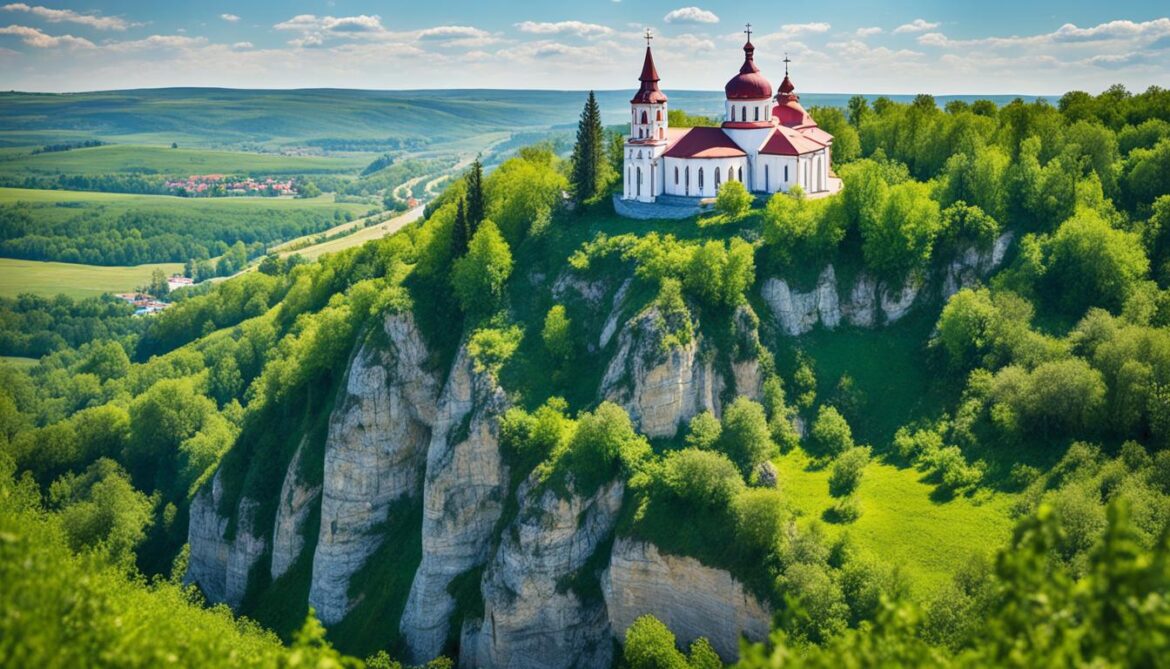
The city of Iasi, often referred to as the cultural capital of Moldova, offers a wealth of historical and artistic attractions. It is home to numerous theaters, museums, and galleries, where visitors can immerse themselves in the country’s cultural heritage. Iasi is also famous for its botanical garden, which is one of the largest and oldest in Romania. With its diverse plant species and tranquil atmosphere, the botanical garden provides a serene escape from the bustling city.
Suceava is another historical city in Moldova that showcases the region’s rich history and architecture. It is home to the famous Suceava Fortress, a medieval stronghold that offers panoramic views of the surrounding landscape. The fortress served as the residence of Moldavian rulers and played a significant role in the region’s history. Today, visitors can explore the well-preserved ruins and learn about the city’s past.
Piatra Neamt, nestled in the Carpathian Mountains, is a picturesque mountain city that offers breathtaking natural beauty. With its stunning landscapes, including the nearby Bicaz Gorge and Ceahlau National Park, Piatra Neamt attracts outdoor enthusiasts and nature lovers. The city is also known for its charming architecture and is home to various historical buildings and churches.
These cultural landscapes of Moldova provide a glimpse into the country’s rich history, art, and natural beauty. Whether it’s exploring the Painted Monasteries, immersing oneself in the cultural offerings of Iasi, discovering the historic city of Suceava, or enjoying the mountainous landscapes of Piatra Neamt, Moldova’s cultural treasures are sure to leave a lasting impression.
Unique Landscapes of Moldova
Moldova is blessed with unique landscapes that captivate visitors. From stunning archaeological sites to breathtaking natural formations, the country offers something for everyone to enjoy.
Orheiul Vechi Archaeological Landscape
The Orheiul Vechi Archaeological Landscape, situated along the Raut River Gorge, is a true gem of Moldova. This picturesque setting is home to numerous archaeological sites spanning different historical periods. Visitors can explore ancient civilizations and witness the remnants of civilizations that once thrived in this stunning location.
Butuceni Promontory
Located within the Orheiul Vechi Archaeological Landscape, the Butuceni Promontory offers a glimpse into ancient settlements and fortresses. The remains of these historical structures reveal the rich history and cultural significance of the area, connecting visitors to the past.
Ceahlau National Park
Ceahlau National Park showcases Moldova’s natural beauty with its mythological rock formations and diverse flora and fauna. Visitors can admire the ethereal landscapes and explore the park’s many hiking trails, immersing themselves in the pristine wilderness and fresh mountain air.
Bicaz Gorge
Bicaz Gorge is a narrow passageway between tall rock walls, offering breathtaking scenery and a thrilling experience for rock climbing enthusiasts. This natural wonder captivates visitors with its sheer beauty and serves as a popular attraction for those seeking adventure in the great outdoors.
These unique landscapes of Moldova provide an opportunity for visitors to connect with the country’s rich history and explore the natural wonders that make it truly special.
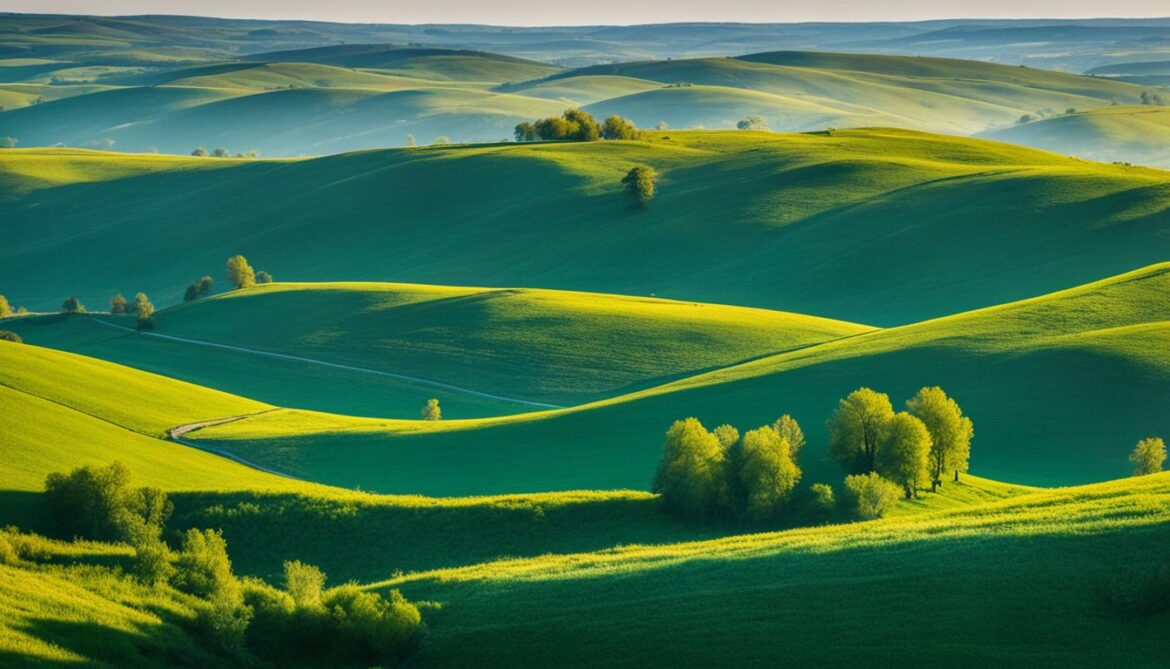
| Landmark |
Description |
| Orheiul Vechi Archaeological Landscape |
Situated along the Raut River Gorge, this landscape is home to numerous archaeological sites spanning different historical periods. |
| Butuceni Promontory |
Ancient settlements and fortresses can be found within this part of the Orheiul Vechi Archaeological Landscape. |
| Ceahlau National Park |
Known for its mythological rock formations and diverse flora and fauna, this national park showcases Moldova’s natural beauty. |
| Bicaz Gorge |
A narrow passageway between tall rock walls, offering breathtaking scenery and popular for rock climbing. |
Traditional Cuisine and Beverages
Moldavian cuisine is renowned for its unique flavors and traditional dishes. The region offers a culinary experience that reflects its rich cultural heritage. From hearty soups to delightful desserts, Moldova is a haven for food enthusiasts.
Moldavian Soups
Moldavian soups, such as borsch and Ciorba Radauteana, are beloved staples in the local diet. These sour soups are bursting with flavor and are enjoyed by both locals and visitors. The tanginess of the broth, combined with the tender meat and vibrant vegetables, creates a comforting and satisfying meal.
Poale-n Brau
A traditional dessert that is popular in Moldova is Poale-n Brau. These small fried pies are filled with cheese, creating a delicious balance of sweet and savoury. They are often served as a snack or a sweet treat after a meal.
Moldavian Beverages
Moldova is also known for its production of homemade beverages. Tuica, a plum-based spirit, is a popular choice among locals and visitors. It is often enjoyed on special occasions or as a way to celebrate the country’s cultural heritage. Moldova is also known for its wild berry liquors, which offer a unique and flavorful experience.
These culinary delights highlight the distinctiveness of Moldavian cuisine and offer a taste of the country’s cultural richness. Whether you’re exploring the vibrant soups or indulging in traditional desserts and beverages, Moldova’s traditional cuisine is sure to leave a lasting impression.
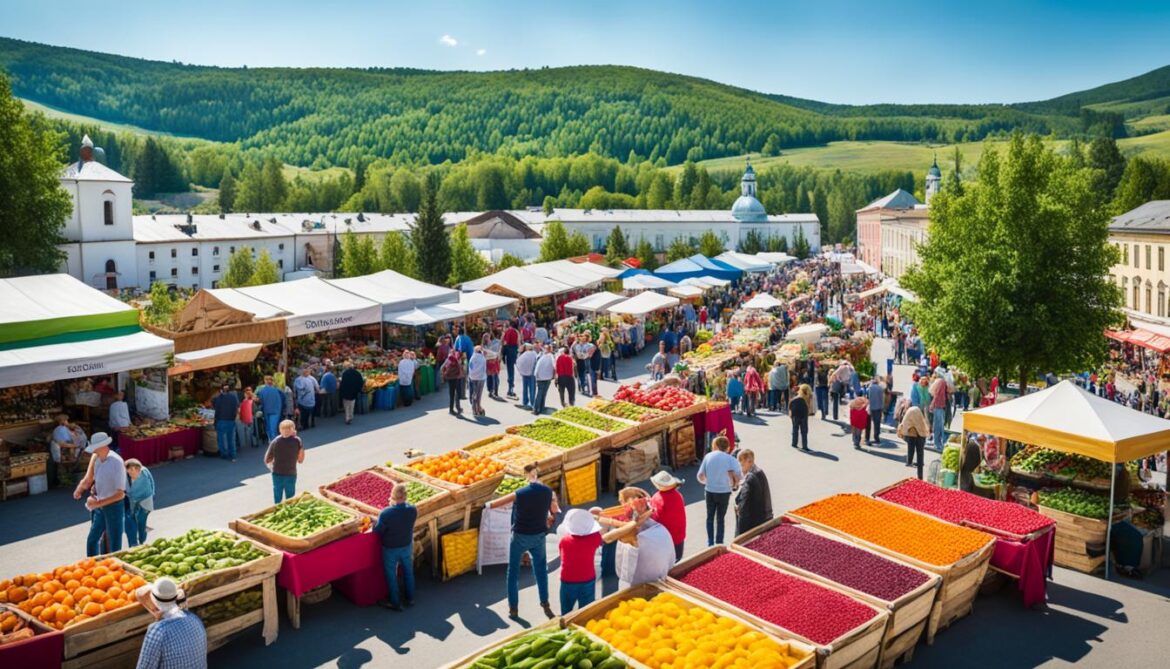
Sustainable Tourism in Moldova
Moldova’s sacred natural sites and cultural landscapes provide a unique and sustainable experience for tourists. With a focus on environmentally friendly practices, visitors can explore the country’s rich heritage and diverse ecosystems through cultural tours and nature exploration.
Cultural Tours Moldova
Immerse yourself in Moldova’s fascinating history and traditions through cultural tours. Discover the region’s historical sites, such as the renowned Painted Monasteries of Bucovina, which showcase stunning medieval architecture and religious art. Explore the city of Iasi, the cultural capital of Moldova, where you can visit museums, theaters, and enjoy the beautiful botanical garden. Take a trip to Suceava and Piatra Neamt to experience the region’s ancient fortresses, preserved architecture, and picturesque mountainous landscapes.
Nature Exploration Moldova
Embark on nature exploration tours to witness Moldova’s diverse ecosystems and protected areas. Visit the Orheiul Vechi Archaeological Landscape, situated along the scenic Raut River Gorge, providing a glimpse into centuries of history through its archaeological sites. Explore the Butuceni Promontory and Peştera promontories, where ancient settlements and fortresses are surrounded by breathtaking natural beauty. Head to Ceahlau National Park, where mythological rock formations and a variety of flora and fauna await. Don’t miss the spectacular Bicaz Gorge, with its towering rock walls and incredible scenery, perfect for rock climbing adventures.
Sustainable tourism in Moldova allows visitors to not only experience the country’s natural and cultural treasures but also contribute to their preservation for future generations.
By promoting sustainable tourism practices, Moldova can ensure the protection and conservation of its sacred natural sites, diverse biodiversity, and unique cultural landscapes. Through responsible travel choices, tourists can support local communities, contribute to the preservation of traditional customs, and enjoy an authentic and enriching experience in Moldova.
Sustainable Tourism in Moldova
| Sustainable Tourism Practices |
Benefits |
| Responsible travel choices |
Supports local communities and economies |
| Preservation of cultural heritage |
Ensures the safeguarding of traditional customs and historical sites |
| Conservation of natural resources |
Protects biodiversity and ecosystems |
| Environmental education |
Raises awareness about the importance of sustainable practices |
| Capacity-building |
Empowers local communities to participate in sustainable tourism initiatives |
By embracing sustainable tourism, Moldova can create a positive and lasting impact on its natural and cultural heritage while providing visitors with unforgettable experiences.

Conclusion
Moldova’s sacred natural sites and biodiversity are invaluable assets that contribute to the country’s cultural and environmental wealth. By prioritizing the conservation of biodiversity and protection of cultural landscapes, Moldova can ensure sustainable development and the preservation of its unique heritage.
To achieve this, it is crucial for Moldova to continue implementing effective conservation strategies. Expanding the network of protected areas and promoting sustainable tourism practices are vital steps towards safeguarding the country’s sacred natural sites, biodiversity, and cultural treasures. By doing so, future generations will have the opportunity to appreciate and benefit from these invaluable resources.
Moldova’s commitment to biodiversity conservation, cultural landscape preservation, and sustainable tourism is essential not only for the well-being of its people but also for the planet as a whole. By valuing and protecting its sacred natural sites and biodiversity, Moldova is contributing to a more sustainable and harmonious future.
FAQ
What are sacred natural sites in Moldova?
Sacred natural sites in Moldova are places that are considered sacred or holy by local communities due to their spiritual, cultural, or historical significance. These sites often have a unique natural feature or are associated with religious or traditional practices.
How does Moldova protect its natural sites and conserve biodiversity?
Moldova protects its natural sites and conserves biodiversity through various strategies and plans. The country has designated protected areas, implemented the National Biodiversity Strategy, and collaborated with international partners. Efforts include expanding protected areas, sustainable financing, research, and capacity-building.
What threats does Moldova face in terms of biodiversity?
Moldova faces threats to its biodiversity, including habitat destruction, pollution, overexploitation of resources, and climate change. Agricultural activities, infringements of environmental regulations, and inadequate biodiversity conservation measures also contribute to the degradation of biodiversity.
What conservation efforts are being made in Moldova?
Moldova has implemented the National Biodiversity Strategy, which includes plans to expand protected areas and increase investment in research and capacity-building. The government works towards sustainable financing of protected areas and collaborates with international partners to support conservation initiatives.
What are the cultural landscapes of Moldova?
The cultural landscapes of Moldova include the Painted Monasteries in the region of Bucovina, the historical attractions in the city of Iasi, and the ancient fortresses and mountainous landscapes in Suceava and Piatra Neamt.
What unique landscapes can be found in Moldova?
Moldova boasts unique landscapes such as the Orheiul Vechi Archaeological Landscape along the Raut River Gorge, the mythological rock formations and diverse flora and fauna in Ceahlau National Park, and the breathtaking Bicaz Gorge with its tall rock walls.
What is traditional cuisine like in Moldova?
Traditional Moldovan cuisine is known for its unique flavors and dishes. Sour soups like borsch and Ciorba Radauteana are popular, as well as traditional desserts like Poale-n Brau. The region is also known for its homemade beverages such as tuica, a plum-based spirit, and wild berry liquors.
How can sustainable tourism be promoted in Moldova?
Sustainable tourism in Moldova can be promoted through cultural tours that highlight historical sites and traditional customs, as well as nature exploration tours that allow visitors to discover the country’s diverse ecosystems and protected areas. By adopting sustainable practices, Moldova can ensure the preservation of its natural and cultural treasures.
What is the importance of protecting Moldova’s sacred natural sites and biodiversity?
Protecting Moldova’s sacred natural sites and biodiversity is crucial for the country’s cultural and environmental richness. Conservation efforts contribute to sustainable development and the preservation of Moldova’s unique heritage for future generations.






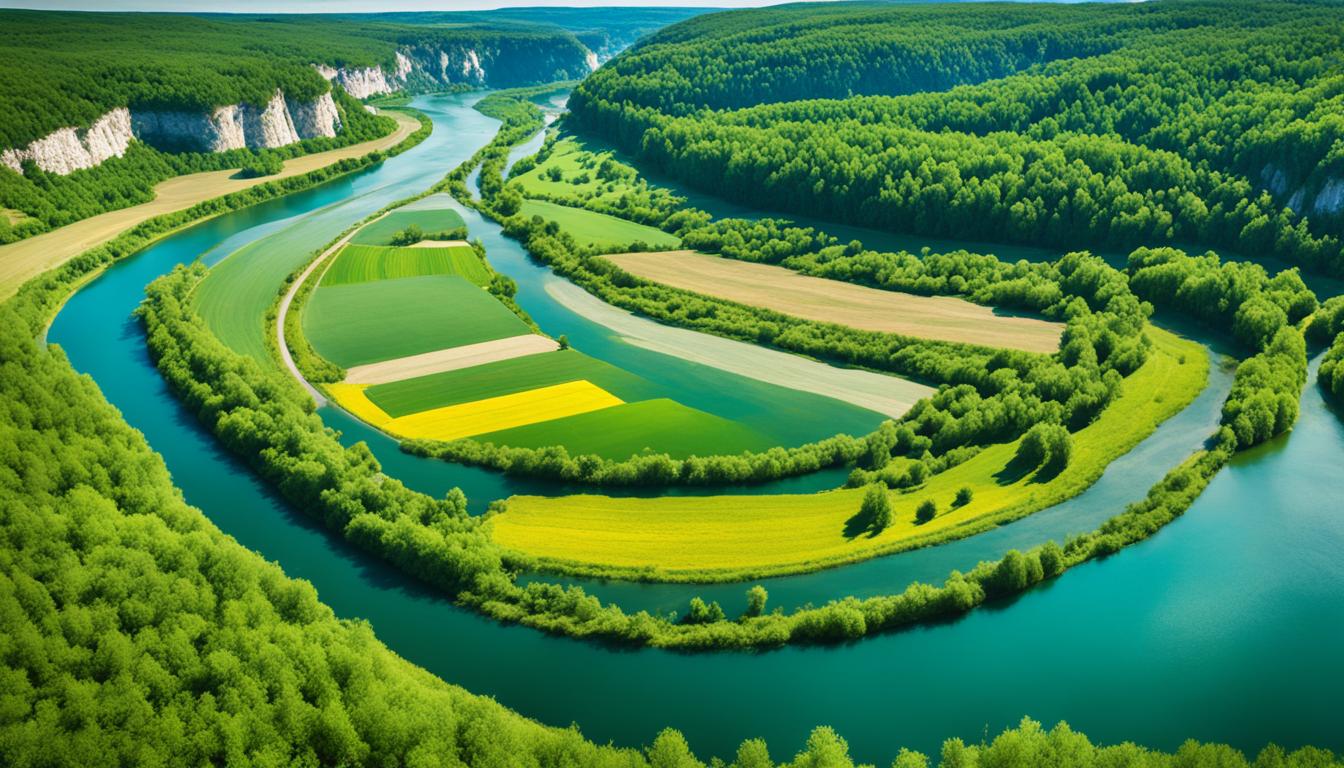

















Post comments (0)